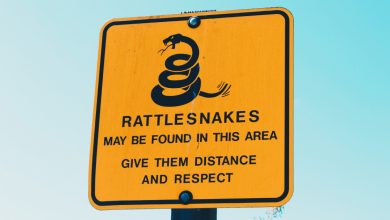Learning zones
This is a tool that presents the learning (change) zones theory that could help on deciding if this is the right time to encourage participants or to confront them in order to aim for the strongest educational impact.

Why did I choose this tool? Skill is something you develop by practicing. I believe it is a lot easier to start practicing when you have basic knowledge on how the skill can be practiced and what to keep in mind before and during this practice. These are the basic theories of learning that will give you an idea of challenge and encouragement in a learning process with young people.
How does this apply to being a trainer? This applies directly to being a trainer First of all to have an idea what to observe in people behavior, second of all to choose the educational intervention that is the most needed at that time.
Main content:
The theory is important when planning a training activity and choosing if the group or individual should be supported/encouraged or confronted/challenged. Again Gailius et al. presented it well and did not mind that we use it here: “First of all, let’s define the space where we learn the least. We experience the fewest lessons in a place where we have already learnt a lot. It is our comfort state. For instance, people who have been driving a car for many years do it ‘automatically’ and to them driving is no longer a challenge or a learning process. The comfort zone is a space which is familiar to us; we know its rules and norms. In the comfort zone we can think of what we already know and understand. In this state we feel calm, nice and sure, but without any changes, feelings of monotony and meaningless take over.
John L. Luckner and Reldan S. Nadler (1991) maintain that real learning only takes place outside the comfort zone. We enter an unfamiliar space, where we face certain challenges. Frequently, before entering this space, we are nervous; we doubt our abilities and feel that we will have to mobilize many of our resources in order to overcome the challenge. It is a learning space. It is also a space for testing your strength in new situations, testing and applying new knowledge, experimenting, acquiring new skills and improving in different ways.
It is important to mention that we experience lots of doubts, we depreciate ourselves and sometimes start whimpering, grumbling and shirking when we transfer from the comfort zone to learning (challenge) zone. In the comfort zone we don’t need to mobilize resource and put in lots of efforts to carry out an activity. It is comfortable and stable in there. The real learning happens when we agree to accept challenges, try new things, reflect and make conclusions.
Our goal in youth work is to extend young people’s comfort zone [same goal in training – J.G-J] When people accept challenges and overcome them, they begin to realize what they are capable of. Activities that previously made them uneasy or doubtful now look manageable. For example: if you implement several international projects, you acquire a great amount of knowledge and skills that you are able to apply later on. This way implementation of international projects enters your comfort zone from your challenge zone. It is important to mention that if you stay in the comfort zone too long, it tends to shrink (contract). The stability of comfort zone makes you dull. By doing solely what we know well, we lose the skill of learning.
The panic zone exists behind the challenge zone. We enter it when we overrate our strengths and possibilities. In the panic zone we lose control and try to come back to the comfort zone as soon as possible. Frequently, having lived through panic and come back to the comfort zone we want to stay there for longer before we collect enough courage to accept any new challenges.” (Gailius et al. 2013, 64-65)
In international training it is important to understand that we get a group of people that is diverse in what is comfort, learning or panic zones. Therefore the members of the group can react very differently to the tasks or challenges that are given to them in order to learn. Gailius and others add: in training “it is important to realize and deeply assess the situations that we put young people into. Are our pedagogic interventions sufficiently challenging to young people, or maybe too much? In order to realize these peculiarities you have to know the people you work with well and constantly refresh your knowledge as well as have certain pedagogic sensitivity.
This model gives us certain knowledge and awareness about our own (and our learners’) learning and conditions necessary for learning to happen.”
Now remember 3 situations from your work: one when the participants stayed in the comfort zone, one when participants were learning, and one when the challenge was too big. Write down the situations and analyze each of them according to these questions:
- What was the task?
- What was the behavior of participants?
- What did you do to manage the situation and ensure learning?
It is not always easy to understand immediately especially if the participants are not learning and why is that happening – because it is boring and known or is it too difficult and the group or certain individuals are lost and don’t even know where to start. Here you can find some behaviors that indicate the challenge being too big: https://www.teachhub.com/teaching-strategies-balance-between-challenge-and-frustration
The following scheme might also give insights on the level of challenges and support and what might be happening in the learning process with a group.
Big challenge
Big support
Small support
Small challenge
Reflection questions:
- Think about yourself as a learner, what are your feelings when you are given a task that you know how to do well in an educational activity? What is your behavior?
- Remember a time when you got into a panic zone, what helped you to get out of it?
Exercises:
How to apply it in everyday life:
- Make a list of behaviors that you observe in yourself and your work that indicate that participants are in the comfort zone, in the learning zone and in the panic (or heading towards it)
- Discuss them with a group of colleagues and add to the list
- Observe the participant’s behavior closely and chose the methods and interventions accordingly.
Closing: if you want to learn more about how-to, please check the articles on probing questions, challenging in education – how to.






